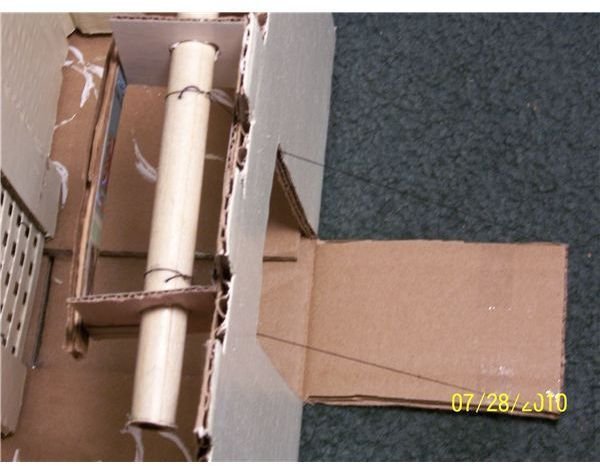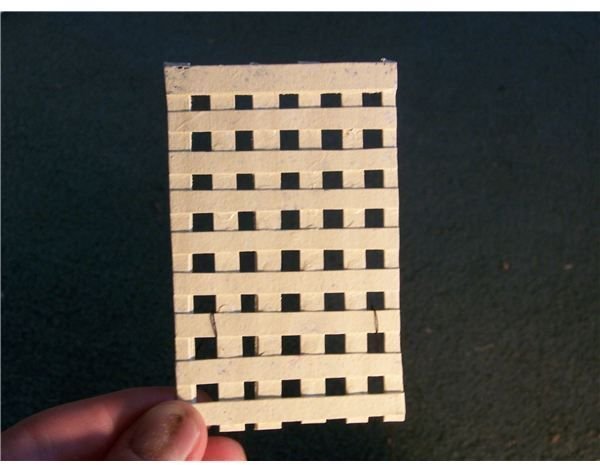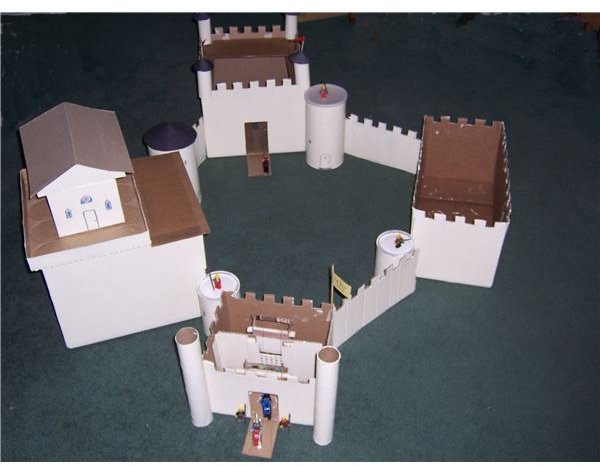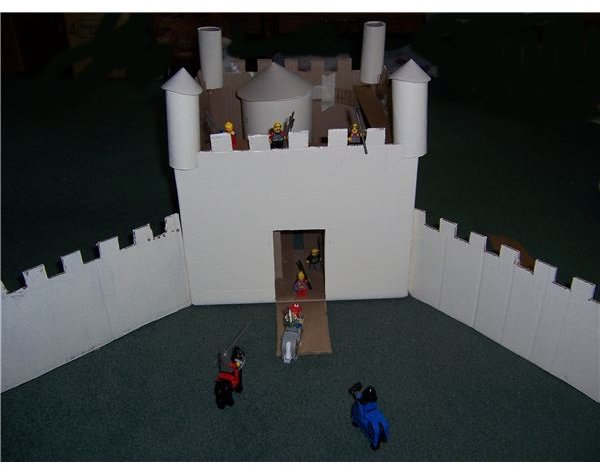How to Make a Cardboard Castle for a Homeschooling Project
Before Construction Begins
If you are wondering how to make a cardboard castle for a homeschooling project, start with these activities. Decide whether or not you are going to play in your castle with toy figures. If so, you’ll want to make the castle to their scale. Look at pictures of castles and get an idea of what features you want to include in your design. You might even make a sketch of how you want your castle to look.
Next, gather boxes of different sizes and shapes. Toilet paper and paper towel tubes make great towers, and a round oatmeal box becomes the castle keep. Shoe and cereal boxes, pasta boxes, and larger boxes can turn into a wall, gatehouse, drawbridge and other buildings. Other useful supplies are tape, thread or string, popsicle sticks, glue or glue sticks, scissors or a razor knife (for older children), construction paper, paint and markers.
Building Gets Underway
Now you are ready to build. For the simple castle, use a big box for the outer walls. You can leave the top edge of the box straight across or cut it as shown into a crenellated or jagged edge. Make sure that the corners are high points, not cut out spaces. Archers made quick shots through the spaces in a crenellated wall, then ducked back behind the upright parts for protection. Make a catwalk for your bowmen by taping a strip of cardboard along each wall.
Slit toilet paper or other tubes along the bottom edge and fit them on the top of the box for towers. Two of the towers are left as is, while the other two have peaked roofs made of construction paper circles which have been cut once from edge to middle and formed into a cone. You can also use pointed paper cups like those used in dispensers for tower roofs. Round towers came to be preferred over square corners, because they were not so easily damaged in battle.
Make a drawbridge by cutting a section of the wall out, leaving the hinge on the bottom. You can shave the edges slightly to make the drawbridge easier to open and close. Use an oatmeal or other large, round box for the castle keep, which was the living quarters for the castle lord and his family, friends and defending knights. If you want to cut or draw windows in the keep, make them small slits to keep out the attackers’ arrows.
Use a cereal box for the gatehouse, which was the place where people wanting to enter the castle stated their business and were admitted or cast out. The extra wall sections were made by cutting apart and crenellating the sides of a box.
Making a Drawbridge
For a more elaborate drawbridge, make a winding mechanism as shown, using a dowel or pencil as an axle. Attach thread to the corners of the bridge and wind around the axle. Lastly, attach quarters or washers to the underside of the drawbridge to give weight to the cardboard. If desired, glue on a covering piece of cardboard to hide the weights.

Making a Portcullis
A portcullis was a gate that could be raised or lowered as the need arose. Make the gate itself from the thin cardboard of a cereal box. Cut small strips and glue them together in a latticework pattern. Make cardboard strip guides for the portcullis as shown in photo. If desired, put tape on the inside of the guides to reduce friction. Make another winding mechanism and attach the thread to the gate. Now you can repel the barbarians if they manage to get through the drawbridge.


Final Touches

Now you can make all kinds of additions to your castle complex, as shown. If you want flags flying from the towers, poke a wooden match through the paper cone at the top and glue a paper or cloth pennant on it. Use markers or paint to decorate your buildings. Does your family have a crest or other symbol? Paint it on one of the flags.
So, now you know how to make a cardboard castle. You will be one of the few building castles today. By the end of the 15th century, castle construction was declining. The need for fortresses was decreasing, and people wanted more comfortable places in which to live. In addition, the cannon had been invented, and cannonballs could break down even the thickest castle walls.
So gather your serfs together and start building!
Image Credits
All Photos by Martell Ackerman. Castles by Mike Ackerman
Resources
Castle, Christopher Gravett, Eyewitness Books 1994
Knights & Castles, Avery Hart and Paul Mantell, Williamson Publishing 1998
